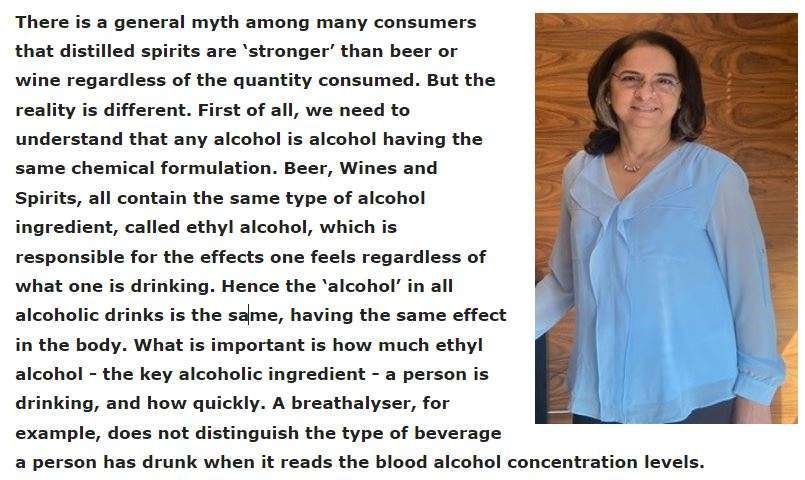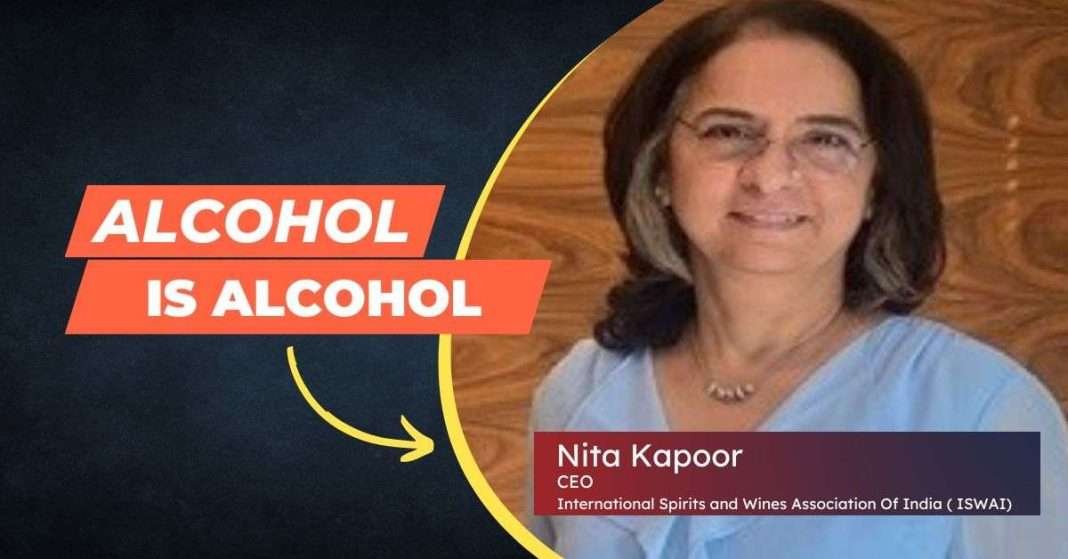The AlcoBev industry is facing a crisis due to the double whammy of high operational costs owing to runaway inflation and high taxation, coupled with negligible or no price revisions forthcoming in most states for the last 4-5 years. Amidst this crisis, there is a persistent request by sections of the AlcoBev industry to lower taxes for their products on the basis that their alcohol is mild or contains low ABV (alcohol by volume) and hence requires to be subject to lower taxation!!! This is sadly a misperception.

The misperception that beer, RTDs (Ready to Drink) or wine have less alcohol than distilled spirits come from the fact that they have a lower ‘alcohol content’ or ‘alcohol by volume’ (ABV) listed on the containers in which they are sold. ABV is a measure of how much alcohol is contained as a percentage of the contents of the container. The alcohol in a bottle of beer, wine or RTD is more diluted than it is in a bottle of spirits. Hence, although standard serves in a bottle of beer, wine or distilled spirits differ, the standard serve sizes of the various types of alcoholic beverages always contain the same amount of alcohol, which take into account their differing ABVs.
What Matters Is How Much Of Alcohol Is Consumed And Not What Type Of Alcohol Is Consumed.
Over 30 countries have moderate or low-risk drinking guidelines. Such guidelines recognise that ‘alcohol is alcohol’ and make no distinction between the alcohol consumed as beer, wine or spirits; rather they reference the standard serving of alcohol or standard units. Standard serving sizes vary between different countries, but the most typical standard serving in India is defined as 12.8ml of alcohol. Using the 12.8ml definition of a standard serve, a 99ml glass of wine at 13% ABV, a 30ml measure of spirits at 42.8% ABV or a 257ml glass of beer at 5% ABV, all contain the same amount of alcohol. So what matters is how much of alcohol is consumed and not what type of alcohol is consumed.
In addition, consumers may not be aware that drinking more of a lower ABV drink, like beer, could result in more alcohol in the body than drinking a small amount of a higher ABV product like gin and tonic. Alcohol is alcohol, regardless of the type of drink (such as beer, wine, or spirits). A standard drink of one beverage should be compared to the standard drink of another; no type of alcohol is ‘safer’ than the other. There is no beverage of moderation, only a practice of moderation.
Any taxation of alcoholic beverages should be part of a comprehensive fiscal and regulatory framework. Taxation should be proportionate, appropriate for each local context, and consistent with World Trade Organization principles. Taxation should neither create market distortions nor exacerbate issues of harmful consumption.
A recent report from the Washington-based International Tax and Investment Center (ITIC), released in November 2022, suggests that high taxes on alcoholic beverages can divert consumers to the illicit alcohol market, which poses a major threat to public health and finances. In alignment with the OECD’s Illicit Trade in High-Risk Sectors report, the research showed that a significant price difference between licit and illicit alcoholic beverages is one of the biggest drivers of the illicit trade; if consumers struggle to afford legal alcoholic beverages, they will turn to cheaper, illicit ones that can be very dangerous, and potentially lethal.
The International Spirits & Wines Association of India (ISWAI), the apex body of the premium AlcoBev sector, is an active advocate of progressive policies and of Responsible Consumption, and promotes the principle of ‘drink less, drink better’.
The above article was published in Aabkari Times magazine, Dec, 2022












